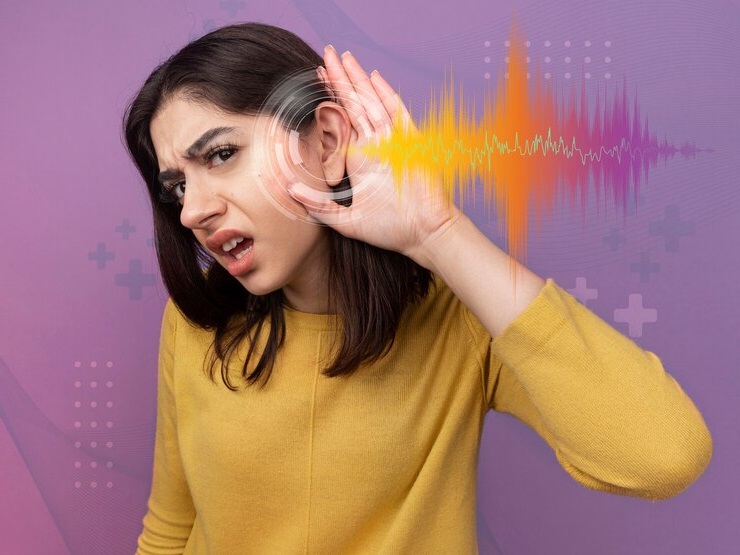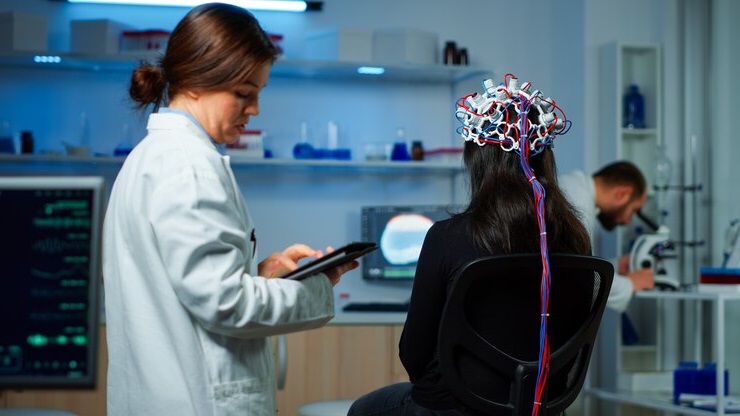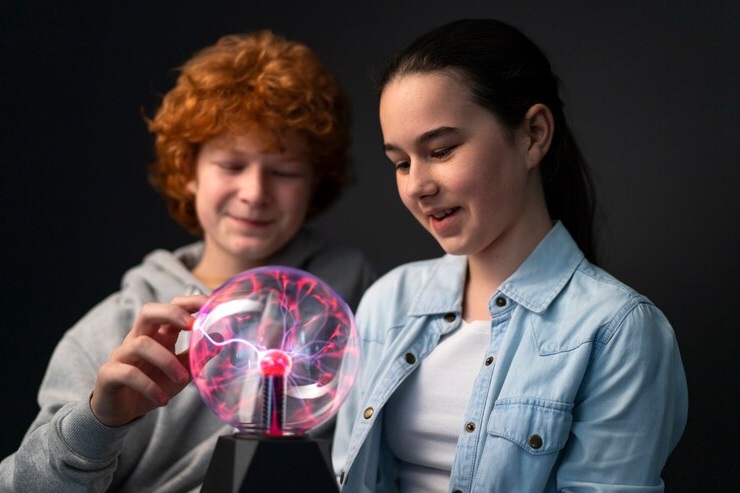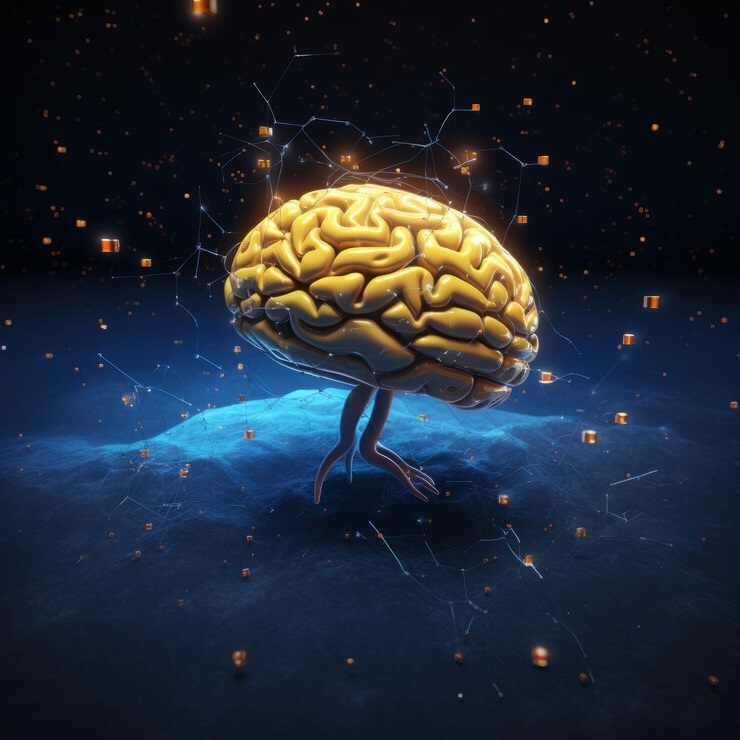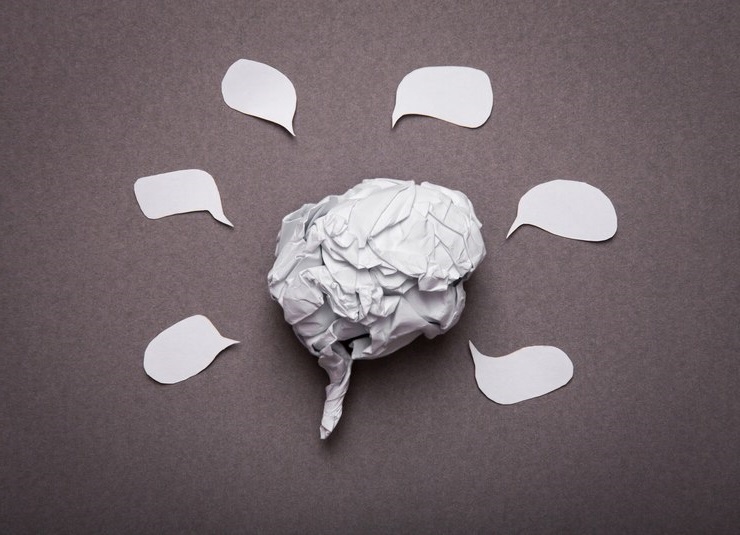
Brainwave monitoring is a technique used to measure and analyze the electrical activity of the brain. It involves the use of specialized devices and equipment to detect and record brainwaves, which are the patterns of electrical activity produced by the neurons in the brain. This information can provide valuable insights into the functioning of the brain and can be used in various fields such as neuroscience, psychology, medicine, and entertainment.
In this article, we will explore the different types of brainwave monitoring devices, the equipment used in brainwave monitoring, the applications of brainwave monitoring, the components of brainwave monitoring systems, and the various fields in which brainwave monitoring is used. We will also discuss how brainwave monitoring can be beneficial for mental well-being, entertainment, health and fitness, and research and education.
Types of Brainwave Monitoring Devices
There are several types of devices used for brainwave monitoring. These devices utilize different technologies to measure and record brainwaves. Some of the commonly used brainwave monitoring devices include:
1. Electroencephalogram (EEG)
EEG is one of the most widely used techniques for measuring brainwaves. It involves placing electrodes on the scalp to detect the electrical activity of the brain. EEG can provide real-time information about brainwave patterns and is commonly used in clinical settings for diagnosing and monitoring various neurological conditions.
2. Magnetoencephalography (MEG)
MEG is a non-invasive technique that measures the magnetic fields produced by the electrical activity of the brain. It uses highly sensitive sensors called SQUIDs (Superconducting Quantum Interference Devices) to detect these magnetic fields. MEG is particularly useful for studying brain activity with high temporal resolution.
3. Functional Magnetic Resonance Imaging (fMRI)
fMRI is a technique that measures changes in blood flow in the brain to infer brain activity. It provides detailed images of the brain and can be used to study brain function and connectivity. fMRI has high spatial resolution but relatively low temporal resolution compared to EEG and MEG.
4. Positron Emission Tomography (PET)
PET is a nuclear medicine imaging technique that uses radioactive tracers to measure brain activity. It provides information about brain metabolism and can be used to study various neurological and psychiatric disorders.
5. Near-Infrared Spectroscopy (NIRS)
NIRS is a non-invasive technique that measures changes in blood oxygenation in the brain. It uses near-infrared light to penetrate the scalp and skull and provides information about brain activity. NIRS is particularly useful for studying brain function in infants and young children.
6. Transcranial Magnetic Stimulation (TMS)
TMS is a non-invasive technique that uses magnetic fields to stimulate specific areas of the brain. It can be used to study brain function and to treat various neurological and psychiatric disorders. TMS can also be combined with EEG to study the effects of brain stimulation on brainwave activity.
Brainwave Monitoring Equipment
Brainwave monitoring requires specialized equipment to detect, record, and analyze brainwave activity. Some of the key components of brainwave monitoring equipment include:
1. Electrodes
Electrodes are used to detect the electrical activity of the brain. They are typically placed on the scalp and are connected to the brainwave monitoring system. There are different types of electrodes available, including wet electrodes, dry electrodes, and active electrodes.
2. Brainwave Headsets
Brainwave headsets are wearable devices that incorporate electrodes to measure brainwave activity. They are often used for consumer applications such as neurofeedback training, meditation, and sleep monitoring. Brainwave headsets are portable and user-friendly, making them accessible to a wide range of users.
3. Brainwave Monitoring Systems
Brainwave monitoring systems are used to amplify, filter, and process the electrical signals detected by the electrodes. These systems typically consist of amplifiers, filters, and signal processors. They ensure that the brainwave signals are accurately recorded and can be analyzed effectively.
4. Brainwave Analysis Software
Brainwave analysis software is used to analyze and interpret the recorded brainwave data. It provides tools for visualizing brainwave patterns, extracting features, and performing statistical analysis. Brainwave analysis software is essential for researchers and clinicians to make sense of the complex brainwave data.
Applications of Brainwave Monitoring
Brainwave monitoring has a wide range of applications in various fields. Some of the key applications of brainwave monitoring include:
1. Neurofeedback Devices
Neurofeedback devices use brainwave monitoring to provide real-time feedback to individuals about their brainwave activity. This feedback can help individuals learn to self-regulate their brainwaves and improve their cognitive performance, emotional well-being, and overall brain function.
2. Brain-Computer Interfaces (BCIs)
BCIs are systems that enable direct communication between the brain and external devices. They use brainwave monitoring to detect and interpret the user’s intentions and translate them into commands for controlling computers, prosthetic devices, or other external devices.
3. Event-Related Potentials (ERPs)
ERPs are brainwave responses that are time-locked to specific events or stimuli. They are used to study cognitive processes such as attention, memory, and perception. Brainwave monitoring is essential for detecting and analyzing ERPs.
4. Quantitative Electroencephalography (qEEG)
qEEG is a technique that analyzes the frequency and amplitude characteristics of brainwave activity. It provides quantitative measures of brain function and can be used for diagnostic purposes, treatment planning, and monitoring the effects of interventions.
Components of Brainwave Monitoring Systems
Brainwave monitoring systems consist of several components that work together to detect, record, and analyze brainwave activity. Some of the key components of brainwave monitoring systems include:
1. Brainwave Amplifiers
Brainwave amplifiers are used to amplify the weak electrical signals detected by the electrodes. They ensure that the brainwave signals are strong enough to be accurately recorded and analyzed.
2. Brainwave Recorders
Brainwave recorders are used to capture and store the brainwave signals detected by the electrodes. They can be standalone devices or integrated into the brainwave monitoring system.
3. Brainwave Sensors
Brainwave sensors are used to detect the electrical activity of the brain. They can be placed on the scalp, inside the ear, or on other parts of the body depending on the specific application.
4. Brainwave Signal Processors
Brainwave signal processors are used to filter, amplify, and process the brainwave signals detected by the sensors. They ensure that the signals are clean and free from noise.
5. Brainwave Data Acquisition Systems
Brainwave data acquisition systems are used to collect and store the brainwave data. They provide the interface between the brainwave sensors and the brainwave analysis software.
6. Brainwave Analysis Tools
Brainwave analysis tools are used to analyze and interpret the brainwave data. They provide tools for visualizing brainwave patterns, extracting features, and performing statistical analysis.
7. Brainwave Mapping Devices
Brainwave mapping devices are used to create maps of brainwave activity. They provide spatial information about the distribution of brainwave activity across different regions of the brain.
Brainwave Monitoring in Various Fields
Brainwave monitoring is used in various fields for different purposes. Some of the key applications of brainwave monitoring in different fields include:
1. Brainwave Biofeedback Equipment
Brainwave biofeedback equipment is used to provide real-time feedback to individuals about their brainwave activity. It can be used for stress management, attention training, relaxation, and other therapeutic purposes.
2. Brainwave Sleep Monitors
Brainwave sleep monitors are used to monitor and analyze brainwave activity during sleep. They can provide insights into sleep patterns, sleep quality, and sleep disorders.
3. Brainwave Research Instruments
Brainwave research instruments are used by researchers to study brain function and behavior. They can be used to investigate various cognitive processes, emotions, and neurological disorders.
4. Brainwave Diagnostic Devices
Brainwave diagnostic devices are used in clinical settings to diagnose and monitor neurological and psychiatric disorders. They can provide valuable information about brain function and help guide treatment decisions.
5. Brainwave Therapy Devices
Brainwave therapy devices use brainwave monitoring to deliver targeted stimulation to specific areas of the brain. They can be used to treat various neurological and psychiatric disorders.
6. Brainwave Rehabilitation Tools
Brainwave rehabilitation tools use brainwave monitoring to guide and monitor the progress of rehabilitation programs. They can be used to improve motor function, cognitive function, and other aspects of brain function.
7. Brainwave Neuroimaging Devices
Brainwave neuroimaging devices are used to visualize and analyze brainwave activity. They can provide valuable insights into brain function and connectivity.
8. Brainwave Neurofeedback Systems
Brainwave neurofeedback systems use brainwave monitoring to provide real-time feedback to individuals about their brainwave activity. They can be used for cognitive training, attention training, and other therapeutic purposes.
9. Brainwave Cognitive Assessment Tools
Brainwave cognitive assessment tools use brainwave monitoring to assess cognitive function. They can be used to evaluate attention, memory, executive function, and other cognitive abilities.
10. Brainwave Neurophysiology Devices
Brainwave neurophysiology devices are used to study the electrical activity of the brain. They can be used to investigate brain function, brain development, and brain disorders.
11. Brainwave Neurology Equipment
Brainwave neurology equipment is used in the field of neurology to diagnose and monitor neurological disorders. It can provide valuable information about brain function and help guide treatment decisions.
12. Brainwave Psychology Instruments
Brainwave psychology instruments are used in the field of psychology to study brain function and behavior. They can be used to investigate cognitive processes, emotions, and psychological disorders.
13. Brainwave Neuroscience Devices
Brainwave neuroscience devices are used in the field of neuroscience to study brain function and connectivity. They can provide valuable insights into the workings of the brain.
Brainwave Monitoring for Mental Well-being
Brainwave monitoring can be beneficial for mental well-being. It can help individuals improve their cognitive performance, manage stress, enhance relaxation, and promote overall brain health. Some of the key applications of brainwave monitoring for mental well-being include:
1. Brainwave Meditation Aids
Brainwave meditation aids use brainwave monitoring to provide feedback and guidance during meditation practice. They can help individuals achieve deep states of relaxation and focus.
2. Brainwave Relaxation Devices
Brainwave relaxation devices use brainwave monitoring to guide individuals into a state of deep relaxation. They can help reduce stress, anxiety, and promote overall well-being.
3. Brainwave Stress Management Tools
Brainwave stress management tools use brainwave monitoring to help individuals manage stress and improve their resilience to stress. They can provide feedback and guidance on stress reduction techniques.
4. Brainwave Attention Training Devices
Brainwave attention training devices use brainwave monitoring to help individuals improve their attention and focus. They can provide feedback and guidance on attention training exercises.
5. Brainwave Sleep Aids
Brainwave sleep aids use brainwave monitoring to promote better sleep quality and improve sleep patterns. They can provide feedback and guidance on sleep hygiene practices.
Brainwave Monitoring for Entertainment
Brainwave monitoring can also be used for entertainment purposes. It can enhance the gaming experience, create immersive virtual reality environments, and provide interactive entertainment experiences. Some of the key applications of brainwave monitoring for entertainment include:
1. Brainwave Entertainment Systems
Brainwave entertainment systems use brainwave monitoring to create personalized entertainment experiences. They can adapt the content based on the user’s brainwave activity, providing a unique and engaging experience.
2. Brainwave Virtual Reality Interfaces
Brainwave virtual reality interfaces use brainwave monitoring to control virtual reality environments. They can enable users to interact with virtual objects and environments using their brainwave activity.
3. Brainwave Gaming Accessories
Brainwave gaming accessories use brainwave monitoring to enhance the gaming experience. They can detect the user’s level of focus, relaxation, or excitement and adjust the gameplay accordingly.
4. Brainwave Wearable Technology
Brainwave wearable technology incorporates brainwave monitoring into wearable devices such as smartwatches, headbands, or glasses. It can provide personalized feedback and insights into the user’s brainwave activity.
Brainwave Monitoring for Health and Fitness
Brainwave monitoring can be used for health and fitness purposes. It can help individuals monitor their brain health, enhance cognitive performance, and improve overall well-being. Some of the key applications of brainwave monitoring for health and fitness include:
1. Brainwave Health Monitoring Devices
Brainwave health monitoring devices use brainwave monitoring to track and analyze brain health parameters. They can provide insights into brain function, cognitive performance, and overall brain well-being.
2. Brainwave Neuroenhancement Devices
Brainwave neuroenhancement devices use brainwave monitoring to enhance cognitive performance. They can provide feedback and guidance on techniques to improve memory, attention, and other cognitive abilities.
3. Brainwave Neurofeedback Headsets
Brainwave neurofeedback headsets use brainwave monitoring to provide real-time feedback on brainwave activity. They can help individuals improve their cognitive performance, attention, and overall brain function.
4. Brainwave Neurostimulation Devices
Brainwave neurostimulation devices use brainwave monitoring to deliver targeted stimulation to specific areas of the brain. They can be used to enhance cognitive function, treat neurological disorders, and promote brain health.
5. Brainwave Neuroplasticity Tools
Brainwave neuroplasticity tools use brainwave monitoring to promote brain plasticity and enhance learning and memory. They can provide feedback and guidance on techniques to optimize brain plasticity.
6. Brainwave Neurorehabilitation Devices
Brainwave neurorehabilitation devices use brainwave monitoring to guide and monitor the progress of rehabilitation programs. They can be used to improve motor function, cognitive function, and overall brain health.
Brainwave Monitoring for Research and Education
Brainwave monitoring is widely used in research and education to study brain function, behavior, and cognition. It provides valuable insights into the workings of the brain and can be used to develop new interventions and therapies. Some of the key applications of brainwave monitoring for research and education include:
1. Brainwave Neurofeedback Training Systems
Brainwave neurofeedback training systems use brainwave monitoring to provide feedback and guidance during neurofeedback training. They can be used to study brain function, behavior, and cognitive processes.
2. Brainwave Neurocognitive Devices
Brainwave neurocognitive devices use brainwave monitoring to study cognitive processes such as attention, memory, and perception. They can provide insights into the neural mechanisms underlying cognitive function.
3. Brainwave Neurodevelopmental Tools
Brainwave neurodevelopmental tools use brainwave monitoring to study brain development in infants and children. They can provide insights into the maturation of brain function and the effects of early experiences on brain development.
4. Brainwave Neurofeedback Therapy Equipment
Brainwave neurofeedback therapy equipment uses brainwave monitoring to guide and monitor neurofeedback therapy sessions. They can be used to study the effects of neurofeedback on brain function and behavior.
5. Brainwave Neurofeedback Research Devices
Brainwave neurofeedback research devices use brainwave monitoring to study the effects of neurofeedback on brain function and behavior. They can provide insights into the mechanisms underlying neurofeedback training.
6. Brainwave Neurofeedback Biofeedback Systems
Brainwave neurofeedback biofeedback systems use brainwave monitoring to provide feedback and guidance during biofeedback training. They can be used to study the effects of biofeedback on brain function and behavior.
Brainwave Monitoring for Various Applications
Brainwave monitoring can be used in various applications to enhance well-being, performance, and overall brain health. Some of the key applications of brainwave monitoring include:
1. Brainwave Neurofeedback Meditation Devices
Brainwave neurofeedback meditation devices use brainwave monitoring to provide feedback and guidance during meditation practice. They can help individuals achieve deep states of relaxation and focus.
2. Brainwave Neurofeedback Relaxation Aids
Brainwave neurofeedback relaxation aids use brainwave monitoring to guide individuals into a state of deep relaxation. They can help reduce stress, anxiety, and promote overall well-being.
3. Brainwave Neurofeedback Stress Relief Tools
Brainwave neurofeedback stress relief tools use brainwave monitoring to help individuals manage stress and improve their resilience to stress. They can provide feedback and guidance on stress reduction techniques.
4. Brainwave Neurofeedback Attention Training Aids
Brainwave neurofeedback attention training aids use brainwave monitoring to help individuals improve their attention and focus. They can provide feedback and guidance on attention training exercises.
5. Brainwave Neurofeedback Sleep Aids
Brainwave neurofeedback sleep aids use brainwave monitoring to promote better sleep quality and improve sleep patterns. They can provide feedback and guidance on sleep hygiene practices.
6. Brainwave Neurofeedback Entertainment Systems
Brainwave neurofeedback entertainment systems use brainwave monitoring to create personalized entertainment experiences. They can adapt the content based on the user’s brainwave activity, providing a unique and engaging experience.
7. Brainwave Neurofeedback Virtual Reality Interfaces
Brainwave neurofeedback virtual reality interfaces use brainwave monitoring to control virtual reality environments. They can enable users to interact with virtual objects and environments using their brainwave activity.
8. Brainwave Neurofeedback Gaming Accessories
Brainwave neurofeedback gaming accessories use brainwave monitoring to enhance the gaming experience. They can detect the user’s level of focus, relaxation, or excitement and adjust the gameplay accordingly.
9. Brainwave Neurofeedback Wearable Technology
Brainwave neurofeedback wearable technology incorporates brainwave monitoring into wearable devices such as smartwatches, headbands, or glasses. It can provide personalized feedback and insights into the user’s brainwave activity.
10. Brainwave Neurofeedback Health Monitoring Devices
Brainwave neurofeedback health monitoring devices use brainwave monitoring to track and analyze brain health parameters. They can provide insights into brain function, cognitive performance, and overall brain well-being.
